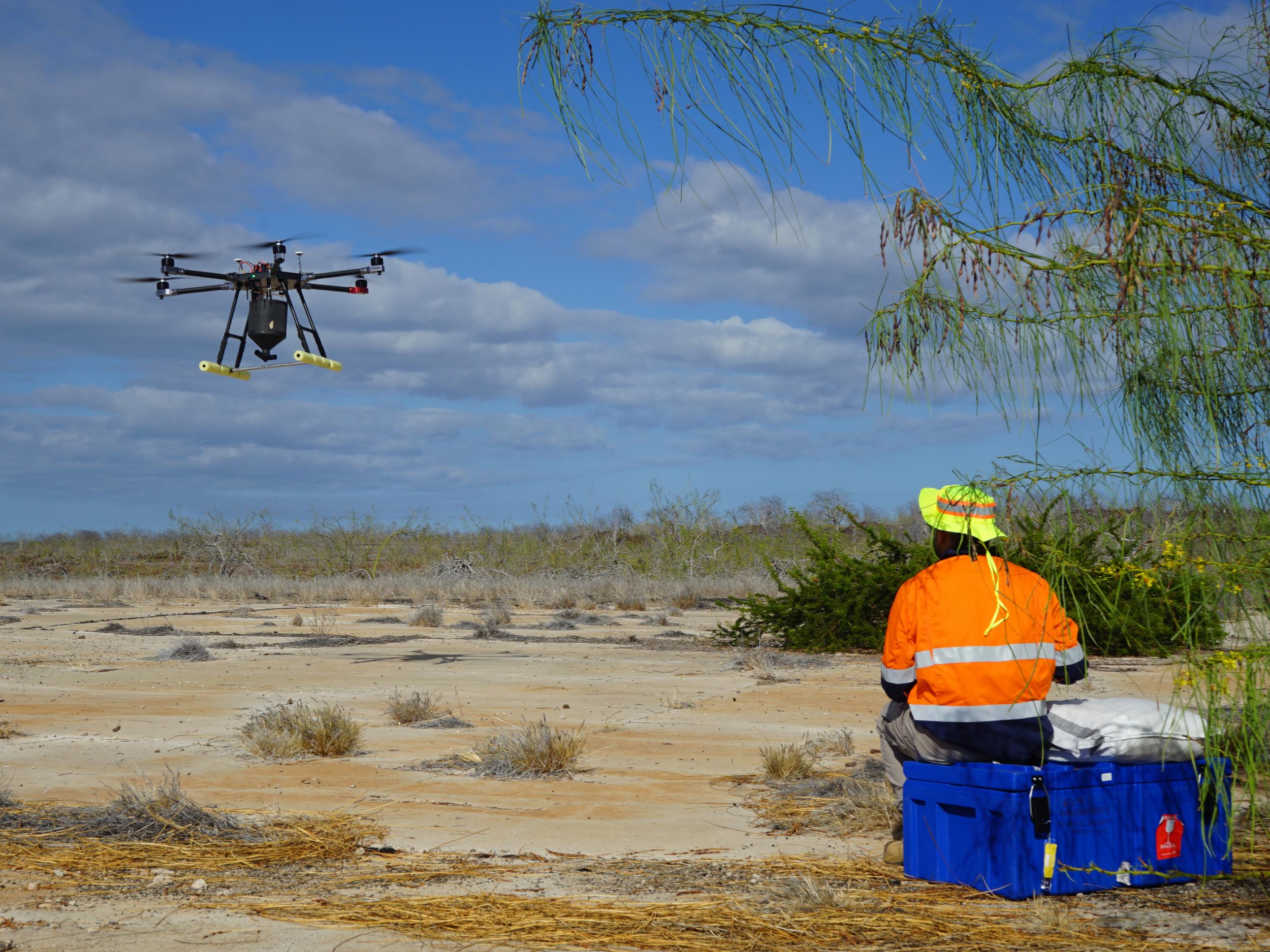Drones released on Galapagos Islands to wipe out invasive rats
Poison dropped from above to tackle rodents provides hope for archipelago's threatened seabird populations
Your support helps us to tell the story
From reproductive rights to climate change to Big Tech, The Independent is on the ground when the story is developing. Whether it's investigating the financials of Elon Musk's pro-Trump PAC or producing our latest documentary, 'The A Word', which shines a light on the American women fighting for reproductive rights, we know how important it is to parse out the facts from the messaging.
At such a critical moment in US history, we need reporters on the ground. Your donation allows us to keep sending journalists to speak to both sides of the story.
The Independent is trusted by Americans across the entire political spectrum. And unlike many other quality news outlets, we choose not to lock Americans out of our reporting and analysis with paywalls. We believe quality journalism should be available to everyone, paid for by those who can afford it.
Your support makes all the difference.Drones are being used by conservation group to drop poison from the sky wipe out rats on the Galapagos Islands.
The invasive rodents have caused enormous damage to the fragile and unique ecosystems where Charles Darwin began to form his theory of evolution.
They have been the target of major eradication campaigns throughout the archipelago and North Seymour island was declared rat-free in 2007.
However, last year local experts realised the rats had returned and declared a state of emergency.
Local officials and the Island Conservation NGO coordinated a response to prevent the rodents feasting on the eggs and seeds of the island’s seabirds and plants.
The team deployed drones to fly across the island, depositing 3,000kg of poison.
They covered around half of its total area.
Drones provided a practical way of rapidly addressing the threat on the rugged island terrain, which was far simpler than traditional operations involving helicopters and specialised pilots, the group noted.
“The use of drones is more precise; it also increases feasibility, and reduces eradication costs of invasive rodents in small and midsize islands worldwide,” said Karl Campbell, South American regional director of Island Conservation.
Park rangers confirmed that the bait was being eaten, and the national park director Jorge Carrion said a second bait drop would take place by the end of the month to wipe out any remaining rats.

The island is a crucial home for valuable nesting species such as frigatebirds and nocturnal swallow-tailed gulls.
Rats and other invasive species pose a particular threat to island ecosystems, which are often the result of long stretches of evolution in which predators have been scarce.
Last year the island of South Georgia, off the southern tip of South America, was declared rat-free for the first time in centuries after a concerted campaign to protect its unique bird life.
The conservationists hope the success of the drone operations in the Galapagos will set the stage for similar campaigns in other parts of the world where inaccessibility make efforts to exterminate pests difficult.

Join our commenting forum
Join thought-provoking conversations, follow other Independent readers and see their replies
Comments